mitsugirly
TPF Noob!
- Joined
- Jan 18, 2009
- Messages
- 487
- Reaction score
- 1
- Location
- Galloway/Columbus Ohio
- Can others edit my Photos
- Photos OK to edit
I've been looking at a lot of pictures on flickr and love the night streaming photos. They just look so cool. So, I thought I would try it tonight.
It's cold, snowing and dark out...so, why not play around with some night shots. Now remember, I've never done anything other than point and shoot camera's and have no idea what I'm doing at this point.
But, here are a few of the shots I took from both inside my house and outside.
1) This was shot threw the window, so there is a lot of glare, but it was the first try.
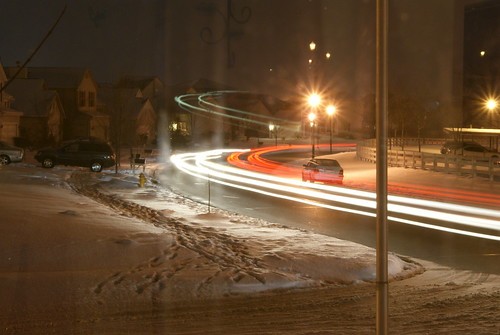
2) Got this one threw the window also of a car pulling away from my house.
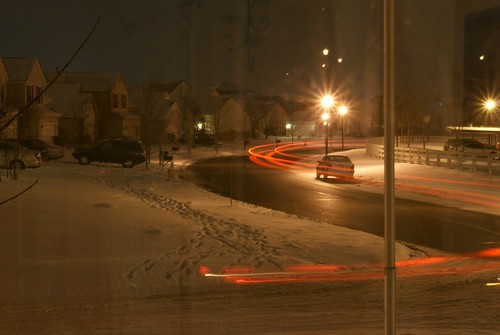
3) Decided to go out the the garage to keep from getting the glare from the window, but I think I was too far away and not high enough up to catch the tail lights going by. I liked the starburst effect that I was getting off the street lights tho.
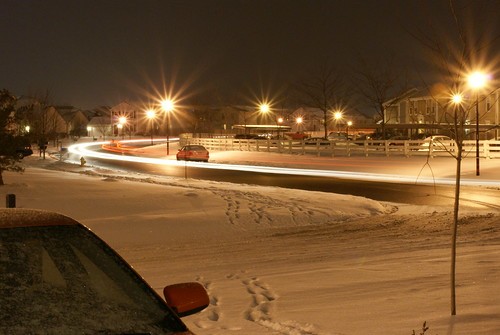
4) Decided to head back inside where it was warm and just deal with the glare one more time. lol
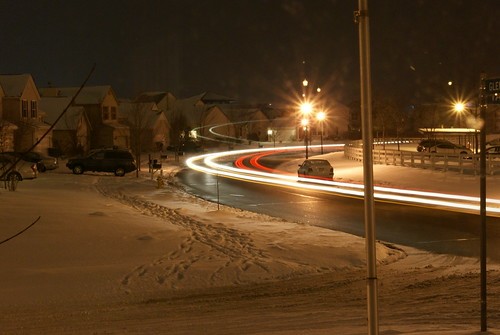
I can't wait for the weather to get warmer and try some of a freeway on an overpass. I've seen some really neat one's of them being shot out the car with the main focus on the car as the lights pass by.
So, did I do ok? Is there a better way to do this? I had the camera set on P and 30" f36 ISO 400. C&C Thanks.
It's cold, snowing and dark out...so, why not play around with some night shots. Now remember, I've never done anything other than point and shoot camera's and have no idea what I'm doing at this point.
But, here are a few of the shots I took from both inside my house and outside.
1) This was shot threw the window, so there is a lot of glare, but it was the first try.

2) Got this one threw the window also of a car pulling away from my house.

3) Decided to go out the the garage to keep from getting the glare from the window, but I think I was too far away and not high enough up to catch the tail lights going by. I liked the starburst effect that I was getting off the street lights tho.

4) Decided to head back inside where it was warm and just deal with the glare one more time. lol

I can't wait for the weather to get warmer and try some of a freeway on an overpass. I've seen some really neat one's of them being shot out the car with the main focus on the car as the lights pass by.
So, did I do ok? Is there a better way to do this? I had the camera set on P and 30" f36 ISO 400. C&C Thanks.

 But, at least I know how to do it.
But, at least I know how to do it.
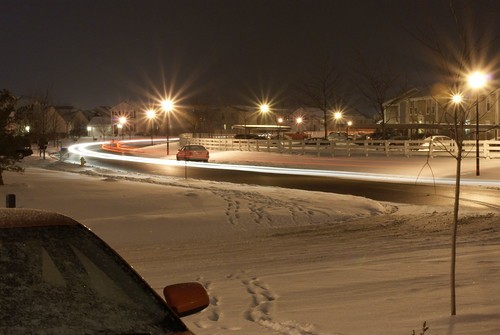



![[No title]](/data/xfmg/thumbnail/34/34698-b2d730db25fc800b9d7d5baf3d251239.jpg?1734165705)
![[No title]](/data/xfmg/thumbnail/34/34591-00eecceb873550182f83f33a45a9460c.jpg?1734165580)


![[No title]](/data/xfmg/thumbnail/34/34592-a6ba64e21d4257d5df6832c1bc9691f1.jpg?1734165588)




